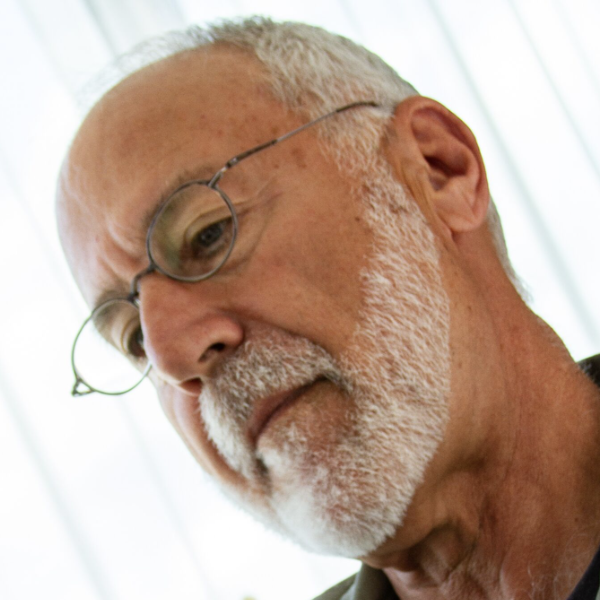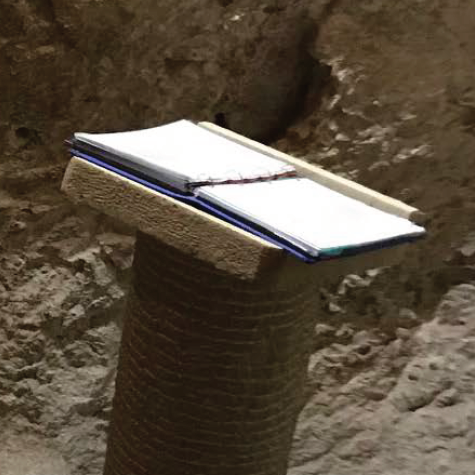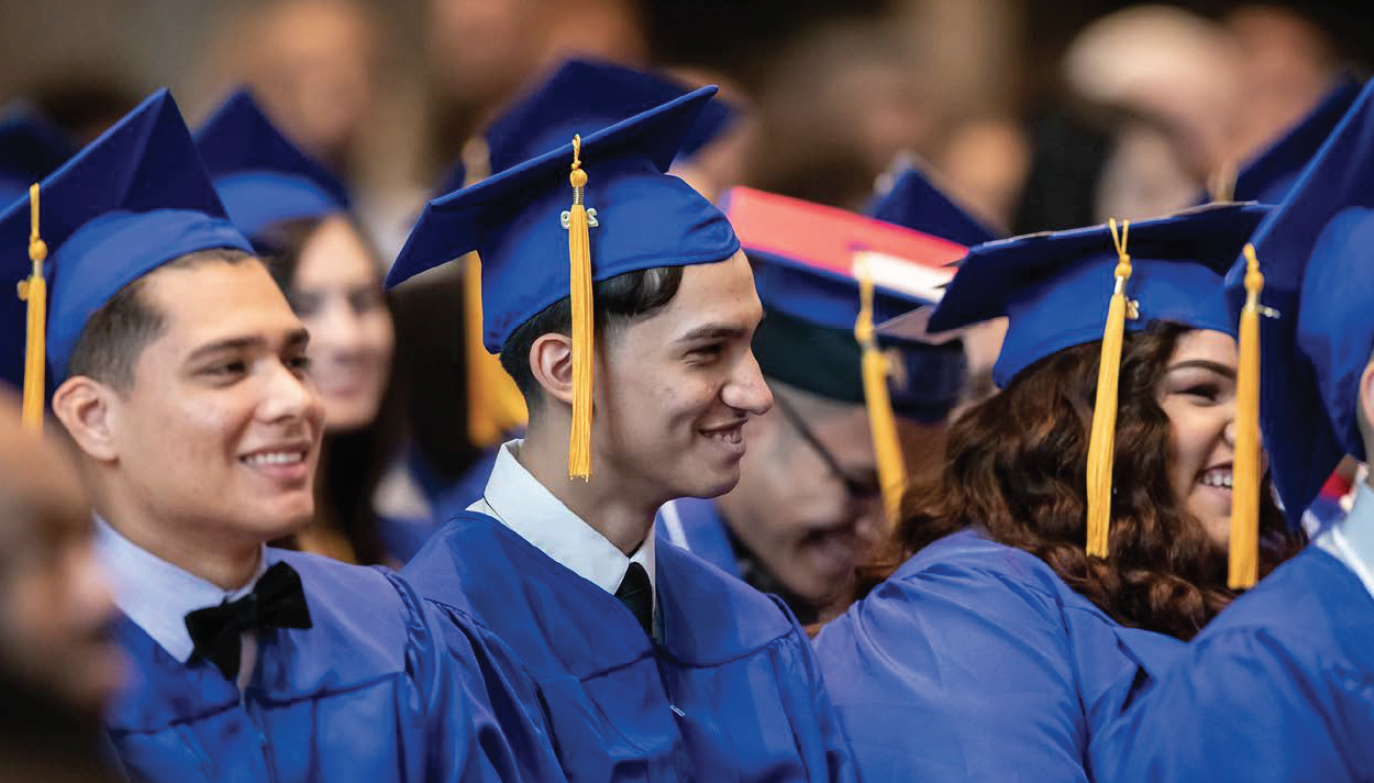
Is it invention? The introduction of something new? Or is it putting ideas to work?
Theodore Levitt, Harvard Business School professor, author, and economist who popularized the term globalization, clearly came out on the side of the last definition: “Creativity is thinking up new things. Innovation is doing new things.”
Saint Ignatius of Loyola would no doubt agree—and the history of the connection between the Society of Jesus and education gives us insights into why.
The early Jesuits did not set out to be teachers and scholars. They saw themselves first and foremost as missionaries. But as their numbers grew, they found that the educational system of the times was inadequate to train the many recruits they were attracting to their company. So, they began teaching those recruits themselves.

When people outside the Jesuits saw the quality of that education, they wanted in—and the innovative early Jesuits seized the opportunity to further their agenda: “to help souls.”
Father John O’Malley, SJ, explains that St. Ignatius and his companions acknowledged that schools were a way to contribute to what they called “the ‘common good’ of society at large.” They saw that schools would provide entree into the life of a city and the lives of their students’ families. And they knew they had the talent and training to do it.
As a result, the first Jesuit secondary school was established in Messina, Sicily, in 1548. Saint Ignatius went on to approve the establishment of nearly 40 schools during the last 10 years of his life—including the Roman College (today’s Pontifical Gregorian University). And the Society offered free education at a time when only the very wealthy could afford it.
“[The Jesuits] were consciously committed to extracting every kernel of potential from every moment and had the foresight to see what could happen when that commitment was multiplied many times over,” writes Chris Lowney in Heroic Leadership: Best Practices from a 450-Year-Old Company that Changed the World. “So one teacher at a time, one student at a time, one year at a time, one school at a time, they created the world’s most extensive and highest-quality education network.”
In other words, the Jesuits employed the maxim of St. Ignatius that “Love ought to manifest itself in deeds rather than in words.” They did the work that was necessary to turn their ideas into actual innovations.
TRANSFORMING URBAN AMERICA ONE STUDENT AT A TIME
Fast forward to 1993: The Society of Jesus seeks to respond to the needs of Chicago’s Pilsen community, a working-class neighborhood of Mexican immigrant families who lack quality, affordable educational options for their children. A team pioneers a model for an academically rigorous and financially sustainable school, with an innovative approach that incorporates students working five days a month in paid, entry-level professional jobs and assigning their earnings to underwrite the cost of their education.
When Cristo Rey Jesuit High School opened in 1996, Catholic educators across the country and prominent philanthropists committed to educational reform take notice. From these seeds emerged the Cristo Rey Network—today comprised of 37 schools nationwide (two of which opened in 2019), with three more set to open in 2020 and 2021.
As a testament to the model’s broad appeal, just 13 of these schools are sponsored by the Jesuits, but all adhere to Mission Effectiveness Standards, which articulate the shared identity of the network. While Cristo Rey schools are locally owned and operated, a national office protects the integrity of the movement and advances school excellence by supporting mission accountability; stewarding national branding, visibility, and fundraising; and much more.
EMPOWERING STUDENTS FOR SUCCESS IN COLLEGE AND LIFE
On May 31, 2019, one of those schools—Cristo Rey Jesuit High School Milwaukee—celebrated the graduation of its first class, which boasts the following:
- Each graduate earned at least two acceptances to four-year colleges.
- Collectively, the 85 seniors won more than $3.5 million in scholarships and grants to put toward their college education.
- All represent the first generation of their families to pursue higher education.
The school’s president, Andrew Stith, recalls, “Looking out at the assembly of graduates, their families, and the mentors from their work experiences gave me a vision of heaven. It was a group of people from all walks of life brought together in pure joy.”
“One of the beautiful things about this ministry is that it enables encounters for so many people who might never have met,” he adds. “I think St. Ignatius would appreciate that we meet people where they are—in their educational journey, in life, in the workplace. It often feels to me like we are collaborating with the Holy Spirit in miraculous work that empowers students to develop their God-given potential to succeed in whatever path they choose, while favorably impacting the Milwaukee community.”
AT THE CROSSROADS
Andrew Stith, president of Cristo Rey Jesuit High School Milwaukee, feels a keen connection to this Ignatian spirit of innovation every day. And when school leadership was searching for a new location that could accommodate more students in better facilities, it helped him in the decision-making process.
“A few years ago, when we were thinking intensely about our future, I was able to go on an Ignatian pilgrimage,” Stith explains. “As I was standing on the steps of the Church of the Gesù in Rome, I was struck by the location St. Ignatius chose for the Jesuits’ ‘mother church.’ He wanted it to be at a crossroads where people from all walks of life encountered one another—not where just the wealthy nobility congregated. That realization helped me to see our property search through a new lens.”
He continues, “I’m happy to say that our new location, at 18th Street and National Avenue, is at a crossroads through which people of various socioeconomic statuses, cultures, and life situations travel. It’s accessible to both the families we serve and our partner businesses in the metro Milwaukee area. I think St. Ignatius would be pleased.”
Construction has begun on the new campus, which the school projects it will occupy during the 2020 school year.
BUILDING SOCIAL CAPITAL
“The chief innovation of the Cristo Rey model is the corporate work study program,” says Fr. Bill Johnson, SJ, vice president for strategic growth at Cristo Rey Milwaukee and a member of the founding leadership teams both there and at Cristo Rey Jesuit High School- Twin Cities. “We say it’s ‘the school that works’—and that’s true in many ways.”
Students’ professional experiences facilitate even more than skill development, resume-building, and job connections. They learn about their interests and talents through engaging in several positions. And they serve as ambassadors for their communities and their schools, showing business leaders the value of their missions and inspiring them to participate.
Raymone Jackson is a case in point. While working as Northwestern Mutual’s senior director of diversity and inclusion and campus development, this Cristo Rey Milwaukee supporter saw firsthand how “Cristo Rey prepares students for the future while helping businesses make meaningful connections with a pipeline of talent. The businesses can learn more about the work styles of the generation and ideally make adjustments to prepare for the future. Students gain access to the vast career opportunities that exist in the market. And ideally, they will be motivated to remain in the area or return after they have graduated from college.”
In addition, “by setting the stage for students from underserved families to navigate between their cultures at home and the cultures in their workplaces, we help them build valuable social capital,” says Aaron Bohr, SJ, who has served as campus minister and director of corporate work study at Cristo Rey Twin Cities.
As the son of an immigrant (his mother is Chinese Jamaican), Bohr identifies with navigating cultures. “But my family did not have the struggles of the families that so many of our students face,” he says, citing the example of a student who had to deal with the deportation of her parents to Mexico while she was in high school. “As we walk with students when that kind of thing happens, we realize they aren’t just part of a news story. Their strength in the face of extraordinary odds is very humbling to me.”
“Although their lives can present such challenges, it’s consoling to realize that our students are positioned to break the cycle of poverty within one generation,” says Fr. Johnson. “And, as a ministry designed to foster spiritual development and ‘form men and women for others,’ it’s our hope that the students will pay it forward. If graduates just get their diplomas, move to the suburbs, and forget about where they came from, we haven’t done our job well. Positioned to be leaders wherever they go, they can open doors for others just as someone did for them.”
MISSION
The Cristo Rey Network?empowers thousands of students from underserved, low-income communities to develop their minds and hearts to become lifelong contributors to society. By providing students an extraordinary college preparatory education and a unique four-year, integrated corporate work study experience, we seek to transform urban America one student at a time.
Q&A WITH CRISTO REY COLLABORATOR RAYMONE JACKSON
While working as senior director of diversity and inclusion and campus development at Northwestern Mutual, Raymone Jackson (now executive director and wealth management national diversity officer at Morgan Stanley in New York) learned firsthand how the Cristo Rey model works. Here, he shares some thoughts about how and why it’s successful.
How did you become involved with Cristo Rey Milwaukee?
I was invited to participate in the inaugural Milwaukee Stars Merengue, a fundraising event modeled after “Dancing with the Stars.” Many Northwestern Mutual leaders were already supportive of the school and we had students working on campus; then I visited Cristo Rey Milwaukee, and I was impressed with the educational model and leadership passion.
Most importantly, I was moved by so many talented young people! They were excited to be there and were being prepared not just for college, but for the workplace. I also helped organize the 2019 Draft Day hosted at Northwestern Mutual. It was powerful to see the interaction between the students and all the businesses committed to the success of these young people.?
What is your perspective on the importance of the corporate work study program?
It’s been wonderful to see so many business professionals sharing their talents and gifts with students to help them gain confidence and build awareness about a variety of careers. The students get to experience many aspects of work life and I believe that it helps them refine their vision and path. Often, people select majors that interest them, but don’t fully understand what a job in that field might look like from day to day. Cristo Rey students have multiple opportunities to try diverse career options and put those options closer within reach.
How do you believe Cristo Rey benefits businesses?
Cristo Rey schools help businesses make meaningful connections with a pipeline of talent. The businesses can learn more about the workstyles of the generation and ideally make adjustments to prepare for the future. And, by gaining access to the vast career opportunities that exist in the market, students will ideally be motivated to remain in the area or return after they’ve graduated from college.

Navigating the intersection between faith, culture, and language - Cristo Rey Chicago embarks on a pioneering Hispanic ministry initiative
“How are we handing on the Catholic faith to the large number of young Latino Catholics, who are the present and the future of the Church in this country?”
That’s one of the questions theology professor Timothy Matovina asks in his research and in his work as co-director of the Institute for Latino Studies at the University of Notre Dame.
According to the Georgetown University-affiliated Center for Applied Research in the Apostolate, Latino people accounted for 71% of the growth of the U.S. Catholic population between 1960 and 2010, and a majority of U.S. Catholics under 18 today, are Hispanic.
But Latino Catholics contribute much more than numbers. As Matovina explains, “They bring so much to the Church, such deep Catholic values, a sacramental view of the world, beautiful religious traditions, and the sense that the faith is not just something you do on Sunday but something that’s part of every day of your life.”
Hosffman Ospino, associate professor of Hispanic ministry and religious education at Boston College, goes so far as to say that “Hispanics are redefining American Catholicism in the 21st century.” In an article by that title in America magazine, he argues that the engagement of Hispanic youth will be a significant factor in the vitality (or lack thereof) of the Church over the next 30 years, and this presents a great “opportunity for renewal and creativity among Catholic educational institutions.”
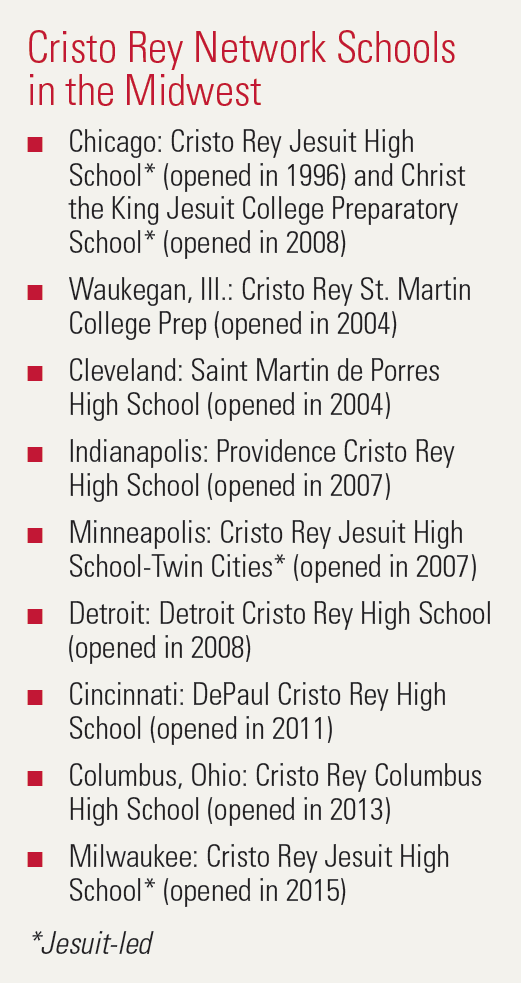
Enter Cristo Rey (CR) Chicago’s strategic plan for the future.
“We believe we are uniquely positioned to examine how Hispanic ministry can integrate culturally relevant art, music, religious traditions, and language in the faith formation of our students, parents, and broader community,” says Antonio Ortiz, president of the high school.
“As the only Catholic high school in Chicago with a dual-language curriculum serving exclusively Spanish-speaking families, Cristo Rey is proud to serve as a bridge to faith for students and their parents and strives to celebrate and nurture their cultural heritage,” Ortiz adds. “But in the spirit of St. Ignatius of Loyola and the Jesuits, we know we can do more—the magis.”
To these ends, school leadership is forming an advisory board of scholars from around the country focused on Hispanic theology (including Ospino), as well as Cristo Rey alumni, parents, and supporters, to create “a pioneering Hispanic ministry program that promotes faith, culture, and language in a manner that fosters campus ministry and theological education Latinamente (‘Latin-ly’).”
The program’s priorities include:
- Defining the state of Hispanic ministry overall, and at Cristo Rey in particular, within the broader context of national best practices, scholarship, methodologies, and strategies.
- Defining where Hispanic ministry, Ignatian spirituality, and youth ministry intersect at Cristo Rey, and building a corresponding curriculum and catechesis.
- Establishing an institute for Hispanic ministry that incorporates art, music, culture, and language in the faith formation of students, parents, and the broader community.
- Serving as a catalyst and resource for new instructional methods, space for dialogues around faith and culture in the Latino community, and an experiential training ground for Jesuits aspiring to minister within the Latino community.

“This is an exciting opportunity for us, as we continue to live out the Ignatian spirit of innovation that the Cristo Rey model represents,” Ortiz says.
CRISTO REY ALUMNI EMBODY THE SCHOOL’S “INTENTIONAL DESIGN”
In 2017, Cristo Rey Jesuit High School Chicago hosted a particularly special speaker at its graduation ceremony.
It wasn’t her title that made her special—although that is impressive. Elsa Camargo, who holds a Ph.D. in higher education, is an assistant professor at the University of Arkansas and junior research fellow at its Office for Diversity and Inclusion.
No, what was special was the fact that she was the first Cristo Rey (CR) Chicago graduate to earn a doctoral degree, and her message focused on why the CR model is unique.
School president Antonio Ortiz recalls, “Elsa emphasized that the Cristo Rey model aligns several aspects of a person’s development—academic, faith, professional, cultural, and more—and that our school was intentionally designed for our students.”
CR Chicago’s 2019 commencement speaker, Cesar Muñoz, agrees.
As the first Cristo Rey alumnus to serve as a CR principal (at Cristo Rey Miami, which will open in 2020), Muñoz says, “My goal is to duplicate my experience at CR Chicago for the benefit of CR Miami students and families. In the formative high school years, I learned the Ignatian/Jesuit mentality of being a person for others. As principal, I hope to motivate our students to be spiritual and community leaders during and after their experience at CR Miami.”
Another goal for Muñoz: “Preparing our students for a changing world while recognizing and celebrating their cultural heritage. I want to make sure that we establish the norm of education being culturally responsive to our student population.”
“Cesar?is a proof point that the Cristo Rey model is evolving with the times, and that part of this evolution is having our graduates assume leadership roles,” says Ortiz. “Students who have gone through the CR experience are best equipped to write the next chapter of what we do—because they are the embodiment of its intentional design, and their students will see that they too can become leaders within the Network.”
OPENING DOORS TO THE COMMUNITY
Now in its 24th year, Cristo Rey (CR) Jesuit High School serves 590 students from 27 zip codes across Chicago’s southwest side, and it continues to create unique opportunities for an underserved community.
As part of its commitment to sharing its resources with the community, Cristo Rey Chicago has opened its gym and library to ABC Pilsen—a program that seeks to benefit disadvantaged youth by teaching them teamwork and leadership skills and instilling confidence through A (academics), B (basketball), and C (community service), all while helping them avoid negative influences on the streets.
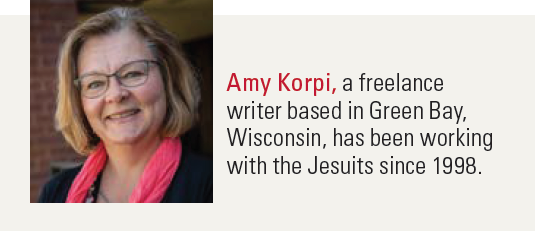
CR Chicago also shares its facilities with Mariachi Juvenil Monumental, an organization started by the school’s dean of students, which provides music lessons to neighborhood children.
“We view opening our doors in this way as an extension of our mission,” says Antonio Ortiz, CR Chicago’s president. “It also supports awareness of CR in the community. And the mariachi students provide great music at our events!”

